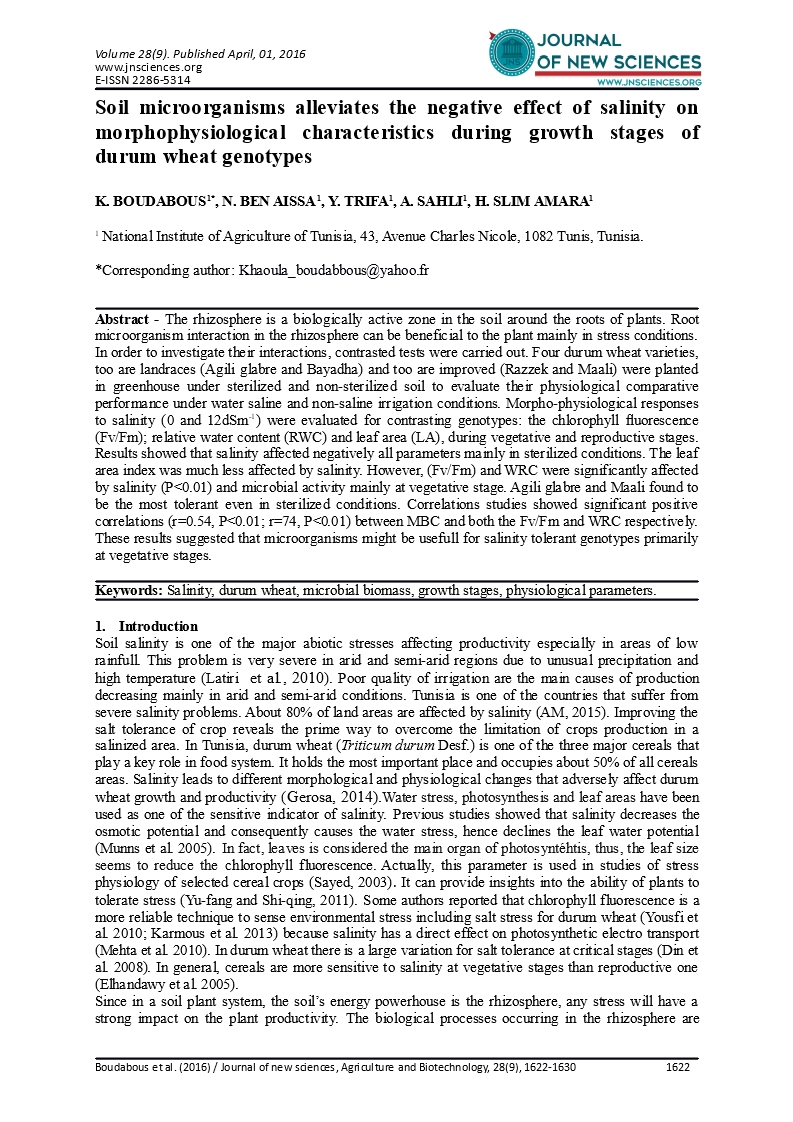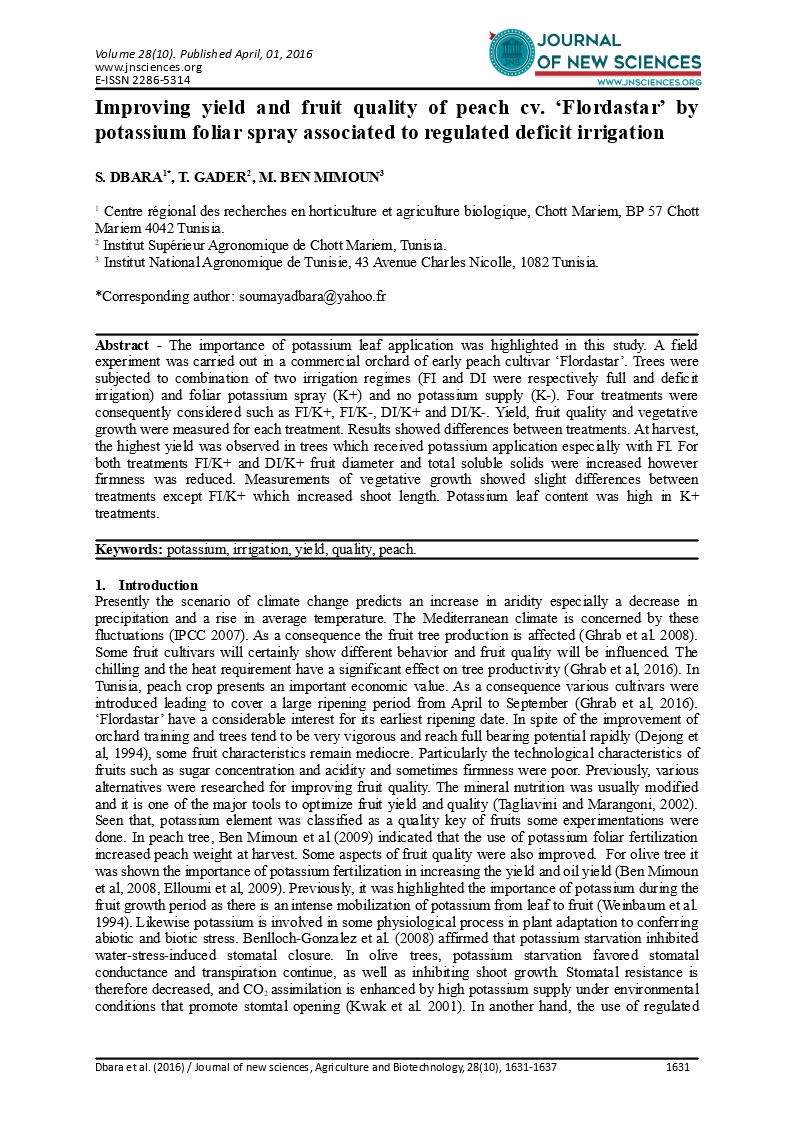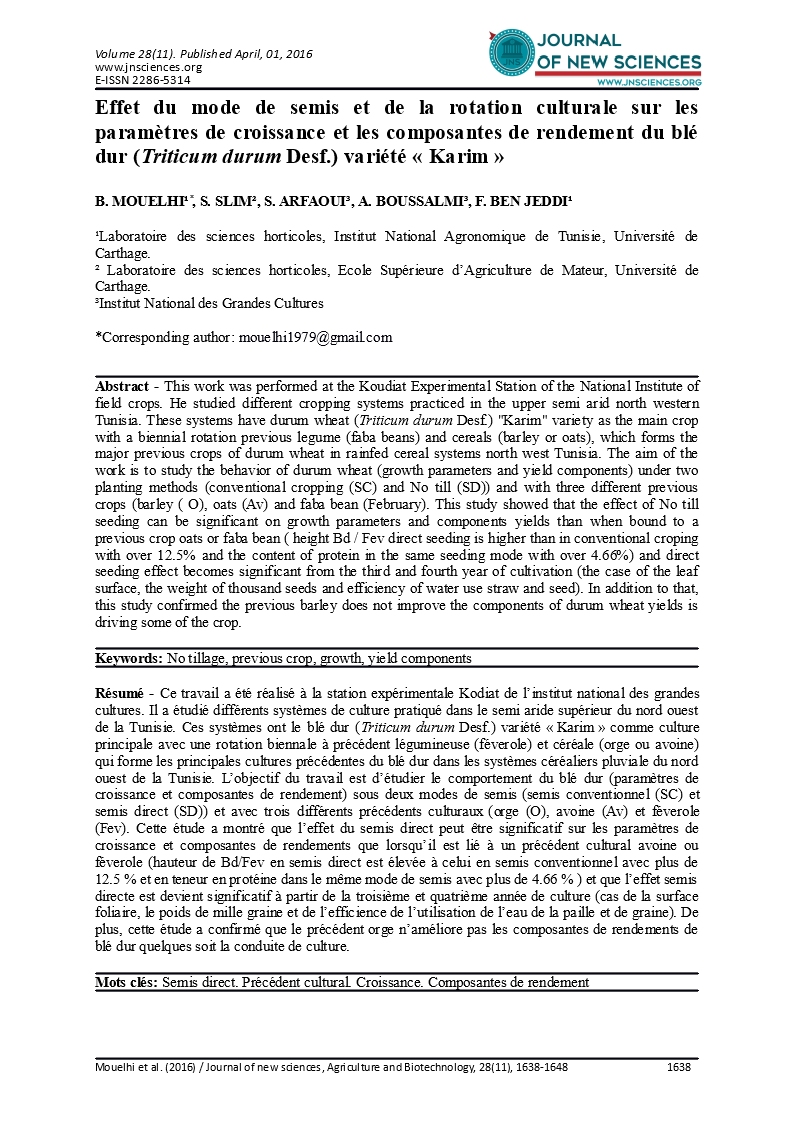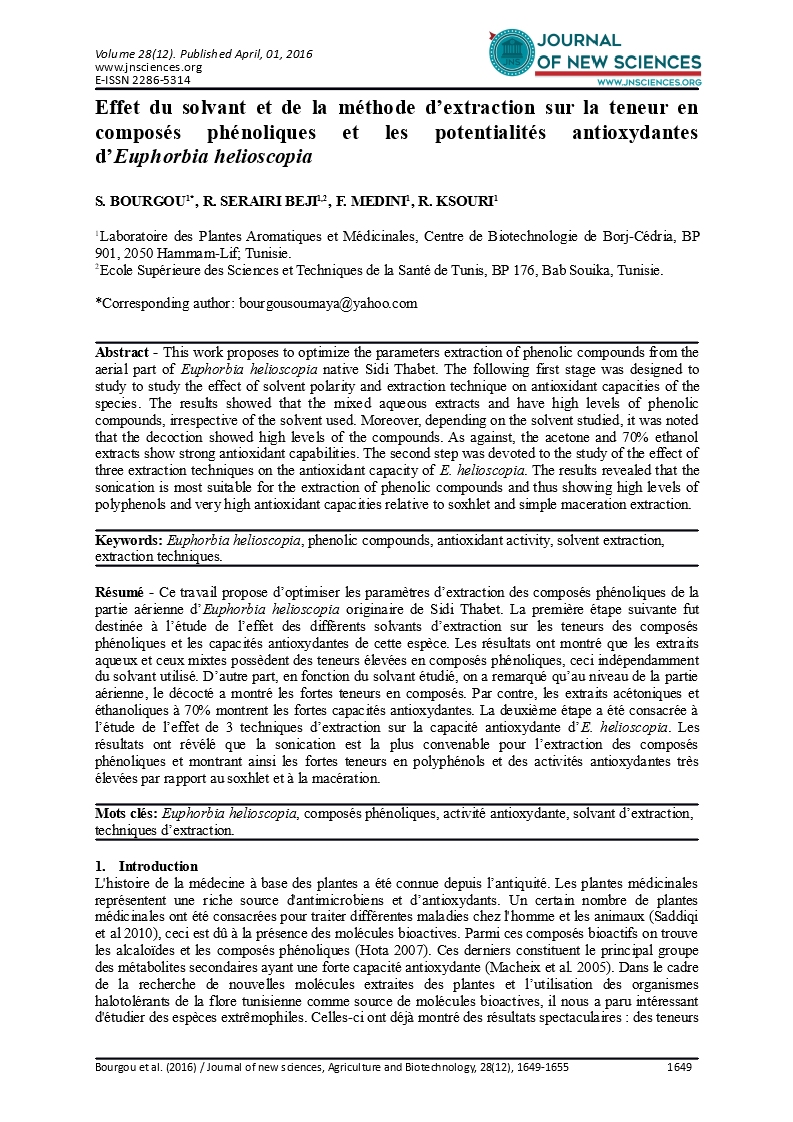- Category: Volume 28
- Hits: 9352
Biochemical and molecular characterization of a new glycoside hydrolase family 17 from Sclerotinia sclerotiorum.
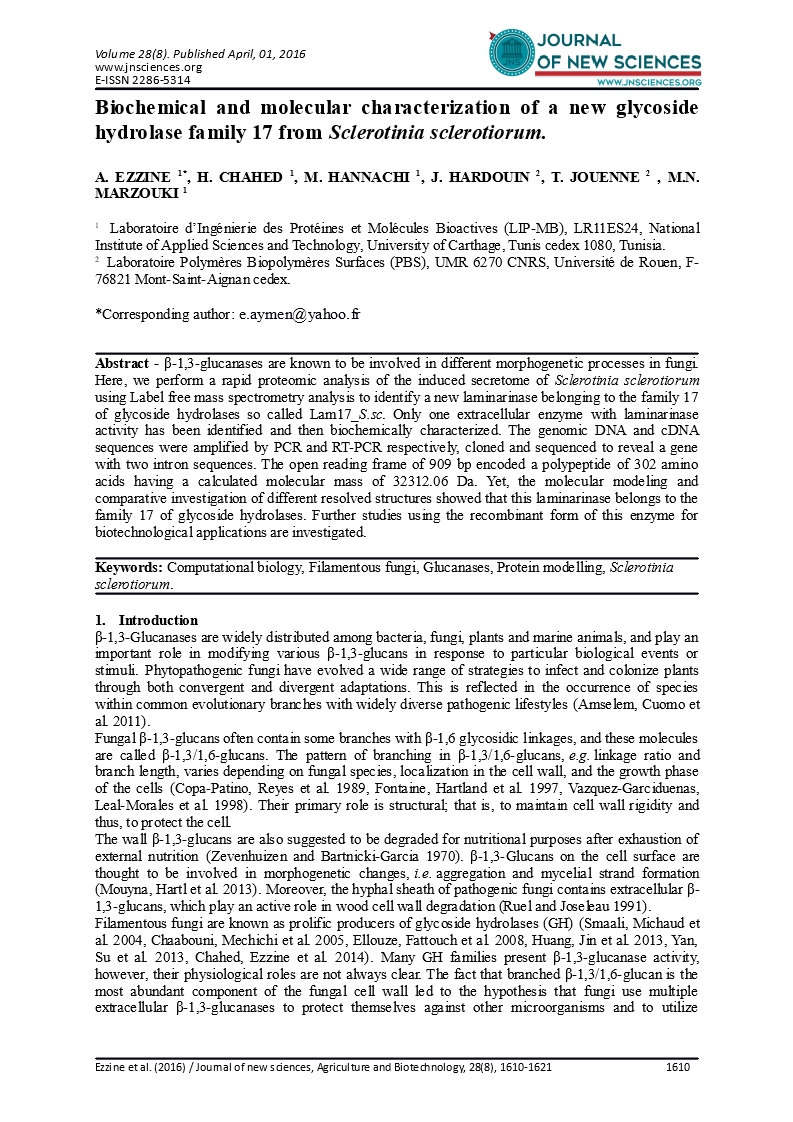
A. Ezzine 1*
H. Chahed 1
M. Hannachi 1
J. Hardouin 2
T. Jouenne 2
M.N. Marzouki 1
1 Laboratoire d’Ingénierie des Protéines et Molécules Bioactives (LIP-MB), LR11ES24, National Institute of Applied Sciences and Technology, University of Carthage, Tunis cedex 1080, Tunisia.
2 Laboratoire Polymères Biopolymères Surfaces (PBS), UMR 6270 CNRS, Université de Rouen, F-76821 Mont-Saint-Aignan cedex
Abstract - β-1,3-glucanases are known to be involved in different morphogenetic processes in fungi. Here, we perform a rapid proteomic analysis of the induced secretome of Sclerotinia sclerotiorum using Label free mass spectrometry analysis to identify a new laminarinase belonging to the family 17 of glycoside hydrolases so called Lam17_S.sc. Only one extracellular enzyme with laminarinase activity has been identified and then biochemically characterized. The genomic DNA and cDNA sequences were amplified by PCR and RT-PCR respectively, cloned and sequenced to reveal a gene with two intron sequences. The open reading frame of 909 bp encoded a polypeptide of 302 amino acids having a calculated molecular mass of 32312.06 Da. Yet, the molecular modeling and comparative investigation of different resolved structures showed that this laminarinase belongs to the family 17 of glycoside hydrolases. Further studies using the recombinant form of this enzyme for biotechnological applications are investigated.
Keywords: Computational biology, Filamentous fungi, Glucanases, Protein modelling, Sclerotinia sclerotiorum.

